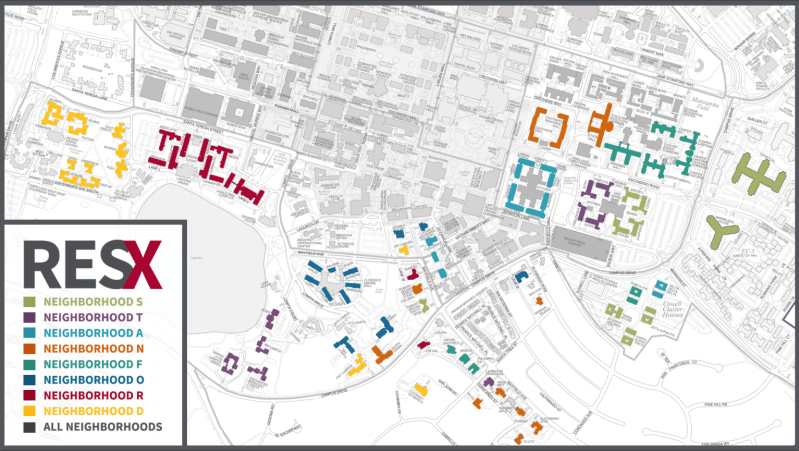The University has announced its plan for assigning neighborhoods and how residences will be divided in a Wednesday message to students. There will be a total of eight neighborhoods preliminarily named with letters: S, T, A, N, F, O, R and D.
Students will be able to coordinate in groups of up to eight to assign into neighborhoods. In June, students will be able to rank specific houses within neighborhoods and apply to themed housing, and in August, they will be able to pick their rooms and roommates, according to Senior Associate Vice Provost and Dean of Students Mona Hicks.
“There’s eight letters in the word Stanford, and therefore each neighborhood has a letter from Stanford,” Hicks said. “So that while we are uniquely different, we’re all tied together, especially now in this time.”
Students can expect to hear from R&DE on Friday about the neighborhood assignment process, which will unfold over the next few months, according to Hicks.
Each neighborhood will have a row house and University theme housing, which includes academic theme houses, ethnic theme dorms, co-ops and housed fraternities and sororities. Mirrielees House and Building A of the Escondido Village Graduate Residences (EVGR-A), which was built as graduate housing but is currently being used for undergraduate housing, will have apartment-style living spaces for undergraduate students across all neighborhoods.
The decision to continue using EVGR-A for undergraduate housing came with an increase of 400 students in the incoming Class of 2025, according to Vice Provost for Student Affairs Susie Brubaker-Cole. Residential and Dining Enterprises (R&DE) consulted the Graduate Student Council in making this decision, and the capacity of graduate student housing will not be reduced because R&DE will retain off-campus subsidized apartments, Brubaker-Cole said.
The ResX initiative also splits themed housing into two types: neighborhood theme houses and University theme houses. Neighborhood theme houses can be changed annually and are only open to the residents, according to the ResX website. University theme houses, on the other hand, are open to students from every neighborhood.
Students will be able to use their meal plan in any dining hall, regardless of what neighborhood they are assigned. The price of meal plans will be the same for those living in houses with resident fellows (RF), row self-op houses and Suites — marking a reduction in the cost of meal plans for those not living in RF houses compared to previous years. Those living in row houses, Suites or co-ops will be able to use up to five meal swipes a week and have five guest meals per quarter, the email read.
All neighborhoods will have all-frosh housing, and all-sophomore housing will be available for the 2021-22 academic year. In their message to students, administrators also wrote that “every neighborhood meets a broad spectrum of disability accommodation needs,” although they did not clarify how these needs will be met.
Because of disparities in Stanford’s housing design, however, some students will spend the majority of their Stanford experience in one-room doubles while others will live in neighborhoods with a higher concentration of two-room doubles. Likewise, dividing the campus into neighborhoods that are largely geographically contiguous will mean that some neighborhoods are much further from central locations, such as the Main Quad or White Plaza.
Students displayed mixed reactions to the ResX housing plan — some were happy with its implementation during the pandemic, while others stated that its timing was inappropriate and rushed. Other student critics cited the possibility of restricted interactions with people outside of one’s assigned neighborhood. However, University officials emphasized that they have been including the campus community in their decision-making process.
“We’ve been working with our teams in R&DE, Residential Education, our student and alumni advisory boards, all our class presidents and the Frosh Council to help us inform and plan our next steps,” Hicks said. “What’s important about this neighborhood process is really fostering community.”
